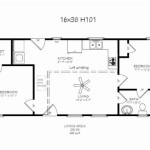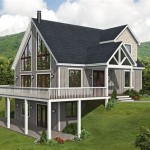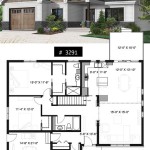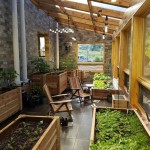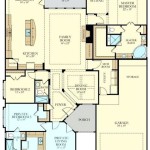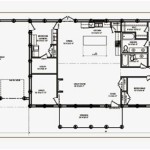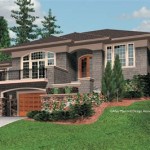Ranch Home Plans With Open Floor Plan: A Comprehensive Guide
Ranch-style homes, characterized by their single-story layout and horizontal orientation, have long been a popular choice for homeowners seeking accessibility and ease of living. When combined with an open floor plan, the benefits are amplified, creating spacious, light-filled environments ideal for both everyday living and entertaining. This article provides a comprehensive overview of ranch home plans with open floor plans, exploring their features, advantages, design considerations, and popular layouts.
The traditional ranch house, often associated with post-World War II America, typically featured a modest footprint, attached garage, and simple construction. However, modern ranch homes have evolved significantly, incorporating contemporary design elements and catering to a wider range of lifestyles. The integration of open floor plans has been a key factor in this evolution, addressing the desire for more fluid and connected living spaces.
Open floor plans, in general, eliminate or minimize walls between key living areas such as the kitchen, living room, and dining room. This creates a larger, more unified space that promotes social interaction and enhances natural light distribution. In the context of a ranch home, an open floor plan can transform what might otherwise be a series of smaller, compartmentalized rooms into a cohesive and inviting living environment.
The popularity of ranch homes with open floor plans stems from a variety of factors, including their accessibility, adaptability, and ability to cater to diverse needs. These homes are particularly well-suited for families with young children, individuals with mobility issues, and those who appreciate a simple and uncluttered aesthetic. Understanding the nuances of these plans is essential for anyone considering building or renovating a ranch-style home.
Key Advantages of Ranch Home Plans with Open Floor Plans
Ranch homes with open floor plans present a compelling combination of benefits that appeal to a broad spectrum of homeowners. These advantages extend beyond aesthetics, impacting functionality, accessibility, and overall lifestyle.
Enhanced Social Interaction: One of the primary benefits of an open floor plan is its ability to foster social interaction. By removing walls between the kitchen, living room, and dining area, family members and guests can remain connected even while engaged in different activities. The cook can easily converse with guests in the living room, and parents can keep an eye on children playing while preparing meals. This seamless flow encourages communication and creates a more inclusive atmosphere.
Improved Natural Light and Ventilation: Open floor plans maximize the distribution of natural light throughout the home. With fewer walls obstructing the flow of light, natural sunlight can penetrate deeper into the interior spaces, creating a brighter and more cheerful environment. This can reduce the need for artificial lighting during the day, contributing to energy savings. Furthermore, open layouts often facilitate better ventilation, allowing for the free circulation of air and reducing the potential for stagnant air pockets.
Increased Perceived Space: Even in a smaller ranch-style home, an open floor plan can create the illusion of a larger, more expansive space. By eliminating walls, the eye is allowed to travel freely, making the interior feel less cramped and more open. This is particularly beneficial for homeowners who value a sense of spaciousness but may not have the budget or desire for a larger home. The open layout also provides greater flexibility for furniture arrangement and allows for creative use of space.
Adaptability and Flexibility: Open floor plans are inherently adaptable to changing needs and lifestyles. The absence of fixed walls allows for greater flexibility in how the space is used over time. For example, a dining area can be easily transformed into a home office or play area as the family's needs evolve. Similarly, the living room can be reconfigured to accommodate different types of gatherings or activities. This adaptability makes ranch homes with open floor plans a desirable choice for homeowners who anticipate future changes in their lives.
Enhanced Accessibility: The single-story design of ranch homes inherently promotes accessibility, eliminating the need for stairs and making them ideal for individuals with mobility issues. When combined with an open floor plan, the benefits are further amplified. Wide doorways and hallways, unobstructed sightlines, and the absence of steps create a safe and comfortable living environment for people of all ages and abilities.
Key Design Considerations for Open Floor Plan Ranch Homes
Designing a ranch home with an open floor plan requires careful consideration of several key factors to ensure functionality, aesthetics, and overall comfort. These considerations extend beyond simply removing walls and encompass aspects such as zoning, traffic flow, and acoustic management.
Zoning and Functionality: While an open floor plan creates a unified space, it's essential to establish distinct zones for different activities. This can be achieved through strategic furniture placement, changes in flooring materials, or the use of architectural features such as partial walls or columns. For example, a kitchen island can serve as a visual barrier between the kitchen and living room, while also providing additional counter space and seating. Similarly, a rug can define the living room area within the larger open space. Careful zoning helps to create a sense of order and prevents the open floor plan from feeling chaotic.
Traffic Flow: Efficient traffic flow is crucial in an open floor plan to ensure that people can move easily between different areas of the home without encountering obstacles or creating bottlenecks. Pathways should be wide and clear, and furniture should be arranged to facilitate smooth movement. Consider the typical routes people will take within the open space and ensure that these routes are unobstructed and direct. Poor traffic flow can make an open floor plan feel cramped and uncomfortable, even if the overall space is large.
Acoustic Management: One of the challenges of open floor plans is managing noise levels. Without walls to absorb sound, noise can travel easily throughout the space, making it difficult to concentrate or relax. To mitigate this issue, consider incorporating sound-absorbing materials such as rugs, curtains, upholstered furniture, and acoustic panels. Strategically placed plants can also help to absorb sound and create a more peaceful environment. In particularly noisy areas, such as the kitchen, consider using sound-dampening materials on cabinets and appliances.
Lighting Design: Effective lighting design is essential for creating a comfortable and functional open floor plan. A combination of ambient, task, and accent lighting should be used to illuminate different areas of the space and to create visual interest. Ambient lighting provides overall illumination, while task lighting focuses on specific activities, such as cooking or reading. Accent lighting highlights architectural features or artwork. Dimmers can be used to adjust the intensity of the lighting and to create different moods. Natural light should be maximized through the use of large windows and skylights.
Storage Solutions: In an open floor plan, storage can be a challenge, as there are fewer walls to accommodate built-in storage solutions. To compensate for this, consider incorporating creative storage solutions such as built-in shelving, hidden storage compartments, and multi-functional furniture. A kitchen island with storage drawers and cabinets can provide valuable storage space in the kitchen, while a coffee table with a lift-top mechanism can offer hidden storage in the living room. Maximize vertical space by using tall bookshelves or cabinets. A well-planned storage strategy is essential for maintaining a clean and uncluttered open floor plan.
Popular Open Floor Plan Layouts for Ranch Homes
While the concept of an open floor plan is generally consistent, the specific layout can vary significantly depending on the size and shape of the ranch home, as well as the homeowner's preferences. Several popular layouts have emerged as being particularly well-suited for ranch-style homes.
The L-Shaped Layout: The L-shaped layout is a common option for ranch homes with open floor plans. In this layout, the living room, dining area, and kitchen are arranged in an L-shape, creating a natural flow between the three spaces. This layout typically places the kitchen at the intersection of the L, allowing for easy access to both the living room and dining area. The L-shape configuration also helps to define distinct zones within the open space.
The Linear Layout: The linear layout is a simple and straightforward option, particularly well-suited for narrower ranch homes. In this layout, the living room, dining area, and kitchen are arranged in a straight line, creating a clear and direct flow between the three spaces. The kitchen is often located at one end of the line, with the living room at the other end, and the dining area in the middle. This layout is efficient in terms of space utilization and provides a clear sense of direction.
The Great Room Concept: The great room concept is a more expansive approach to open floor plans, typically involving a larger, more unified space that encompasses the living room, dining area, and kitchen. This layout often features high ceilings and large windows to maximize natural light and create a sense of spaciousness. The great room concept is ideal for homeowners who value a large, open gathering space for entertaining and family activities.
The Kitchen-Centric Layout: In this layout, the kitchen is positioned as the central hub of the open floor plan, with the living room and dining area radiating outwards from the kitchen. This layout is ideal for homeowners who enjoy cooking and entertaining, as it allows them to easily interact with guests while preparing meals. The kitchen island often serves as a focal point in this layout, providing additional counter space, seating, and storage.
The Split Layout: This layout divides the home into two distinct wings, typically with the living areas (living room, dining area, kitchen) located on one side of the house and the bedrooms and bathrooms located on the other side. This arrangement provides a degree of separation between the living and sleeping areas, which can be beneficial for noise control and privacy. The open floor plan is typically confined to the living areas, creating a unified and inviting gathering space.
Ultimately, the best open floor plan layout for a ranch home will depend on a variety of factors, including the size and shape of the home, the homeowner's lifestyle, and their preferences for aesthetics and functionality. Careful consideration of these factors is essential for creating a successful and enjoyable living environment.

Ranch House Plans With Open Floor Blog Homeplans Com

Open Concept Ranch Floor Plans Houseplans Blog Com

Ranch House Plans With Open Floor Blog Homeplans Com

Trending Ranch Style House Plans With Open Floor Blog Eplans Com

Open Concept Ranch Floor Plans Houseplans Blog Com

9 Best Open Floor Plans For Ranch Style Homes Deepnot Log Home House

Ranch House Plans With Open Floor Blog Homeplans Com
Trending Ranch Style House Plans With Open Floor Blog Eplans Com

Craftsman Style House Plan 3 Beds 2 Baths 1550 Sq Ft 427 5 Ranch Plans New

Open Concept Ranch Floor Plans Houseplans Blog Com

